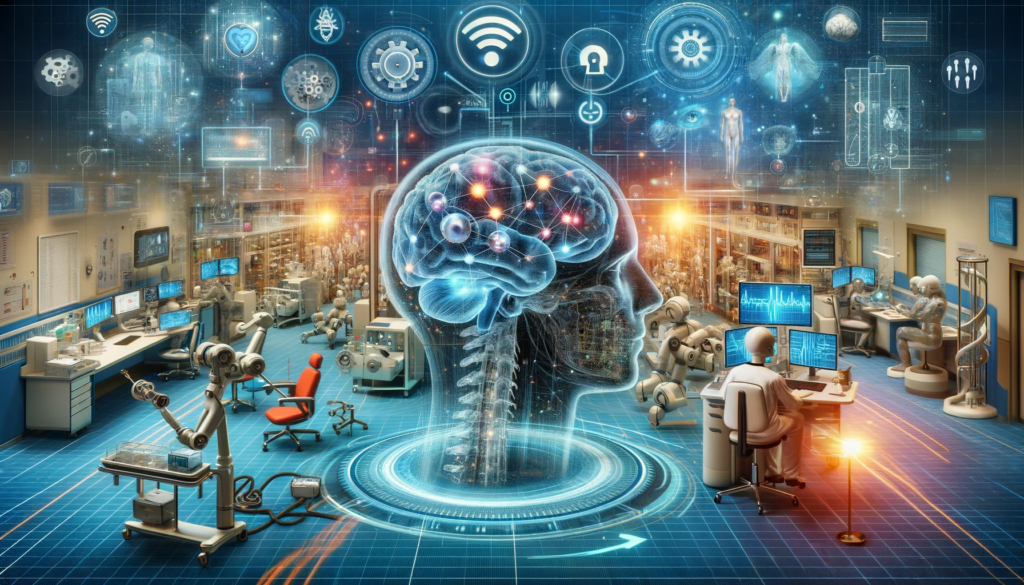In the fast-paced world of healthcare technology, the use of the Internet of Things (IoT) is bringing about a new era in medical device manufacturing and design. IoT is a network of devices that communicate and share data, and it is changing industries globally, including healthcare. This technology is playing a crucial role in transforming how medical devices are made and designed, resulting in remarkable improvements in patient care and medical efficiency.
The current landscape of medical device manufacturing is characterized by a growing demand for smarter, more connected, and patient-centered devices. Traditional methods of device production are evolving to incorporate IoT technologies, which enable devices to gather, analyze, and transmit health data, enhancing their functionality and usability. Similarly, the design of medical devices is undergoing a significant shift. IoT integration is not just adding new features to these devices but is fundamentally changing the way they interact with patients and healthcare professionals.
As we delve deeper into this topic, we will explore how IoT is revolutionizing medical device manufacturing and design, the challenges and opportunities it presents, and the future it is shaping for healthcare technology. The aim is to provide a comprehensive understanding of this technological evolution and its profound impact on the world of medicine.
IoT Integration in Medical Device Manufacturing
The integration of IoT in medical device manufacturing marks a significant leap forward in healthcare technology. IoT brings many advantages to the manufacturing process, fundamentally altering how medical devices are produced. One of the most notable benefits is the enhancement of manufacturing efficiency. IoT-enabled devices in production lines can collect and analyze data in real-time, leading to more efficient operations, reduced waste, and improved production times. This heightened efficiency is crucial in an industry where the timely delivery of medical devices can be lifesaving.
Another key advantage of IoT in manufacturing is improved quality control. Sensors and connected devices can continuously monitor the production process, detecting anomalies and ensuring that every device meets the stringent quality standards required in healthcare. This real-time monitoring helps maintain consistent quality across all products, a critical factor given the direct impact of these devices on patient health.
Moreover, IoT enables predictive maintenance of manufacturing equipment, minimizing downtime and preventing costly disruptions. By analyzing data from equipment sensors, manufacturers can predict when maintenance is needed, thereby proactively addressing potential issues before they escalate into major problems.
Redefining Medical Device Design with IoT
The influence of IoT extends beyond manufacturing processes, significantly impacting the design of medical devices. With IoT, the focus shifts to creating smarter, more interactive devices that enhance patient care and experience. IoT-enabled medical devices can now collect and transmit vital health data, facilitating remote monitoring and diagnosis. This capability is especially beneficial for chronic disease management, where continuous monitoring can lead to better disease control and patient outcomes.
Smart features enabled by IoT are also making medical devices more user-friendly and accessible. For instance, devices with IoT capabilities can remind patients to take medications, track dosage, and even alert healthcare providers in case of irregularities. This not only improves patient compliance but also enhances the overall effectiveness of treatments.
Additionally, IoT facilitates personalized healthcare. By gathering and analyzing patient-specific data, medical devices can be tailored to individual needs, offering customized care that was not possible with traditional devices. This personalized approach is a cornerstone of modern healthcare, and IoT is playing a critical role in making it a reality.
Challenges and Solutions in IoT-Enabled Manufacturing and Design
For instance, one major challenge is complying with regulations. The medical device industry already faces stringent regulations, and integrating IoT technology further complicates matters. Manufacturers must navigate through numerous rules and standards to ensure their products are both effective and compliant with legal requirements. Addressing the challenges requires a multifaceted approach. Manufacturers should take a proactive stance towards regulatory compliance, staying up-to-date with regulatory changes and incorporating them into the design and manufacturing process from the very beginning.
Case Studies of Successful IoT Integration
To illustrate the potential of IoT in medical device manufacturing and design, let’s examine a few case studies:
- Remote Cardiac Monitoring Devices: IoT-enabled cardiac monitors allow for continuous monitoring of heart patients, transmitting data in real-time to healthcare providers. This technology has significantly improved patient outcomes by enabling early detection of potential cardiac issues.
- Smart Inhalers: For asthma and COPD patients, smart inhalers equipped with IoT technology have been a game-changer. These devices track medication use, monitor adherence, and can even provide feedback on inhaler technique, leading to better disease management.
- Connected Glucose Monitors: These devices have revolutionized diabetes care. They continuously monitor blood glucose levels and share the data with smartphones or dedicated devices, allowing for more accurate and timely insulin administration.
Each of these case studies demonstrates how IoT can enhance the functionality of medical devices, improve patient outcomes, and streamline healthcare delivery.
Future Trends and Predictions
The future of IoT in medical device manufacturing and design is marked by several promising trends. One of the most significant is the increasing adoption of Artificial Intelligence (AI) alongside IoT. AI’s ability to analyze large datasets generated by IoT devices can lead to more precise and predictive healthcare solutions. This synergy between AI and IoT is expected to enhance disease prediction, and personalized treatment plans, and even assist in complex surgical procedures.
Another trend is the growing focus on patient-centric design in medical device development. IoT allows for the collection of patient feedback in real-time, enabling manufacturers to design devices that are not only technically efficient but also user-friendly and aligned with patient needs.
We can also anticipate a rise in the use of IoT for home healthcare devices. As healthcare shifts towards more outpatient and home-based care, IoT-enabled devices will become crucial for continuous patient monitoring, reducing the need for hospital visits and enabling more comfortable recovery at home.
The impact of IoT on medical device manufacturing and design is profound and far-reaching. By enabling smarter, more connected, and patient-centered medical devices, IoT is playing a crucial role in transforming healthcare delivery. While challenges like data security and regulatory compliance persist, the benefits and possibilities IoT brings to the table are undeniable. As we move forward, the continued innovation and integration of IoT in medical devices are set to redefine healthcare, making it more efficient, accessible, and personalized than ever before.










